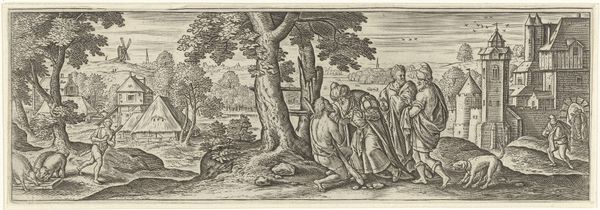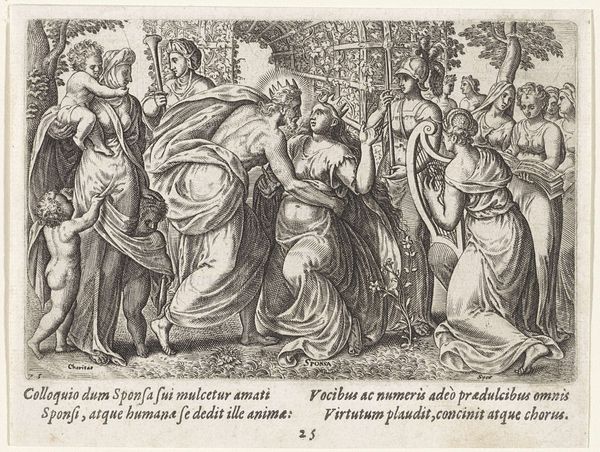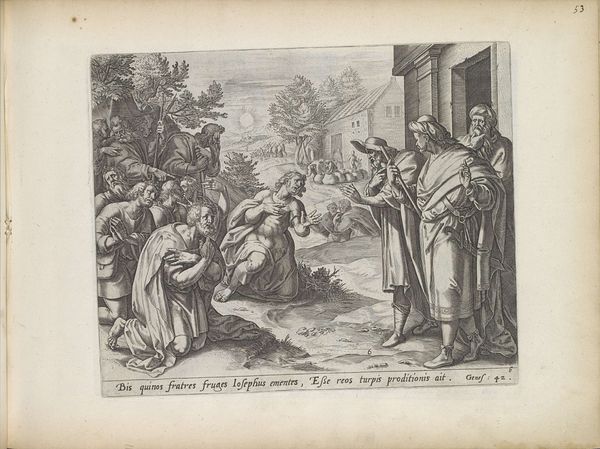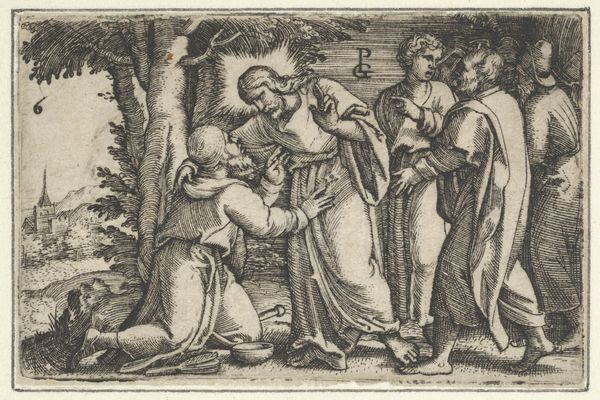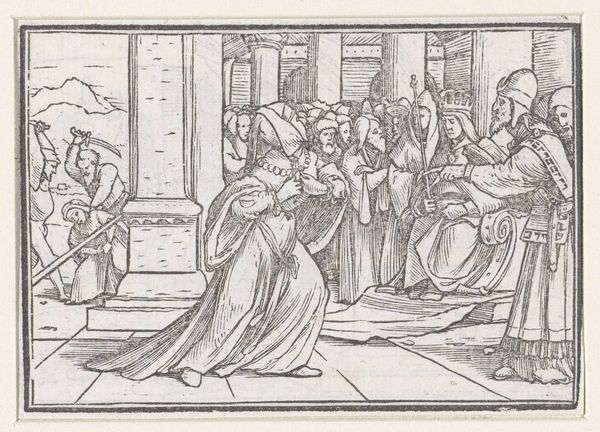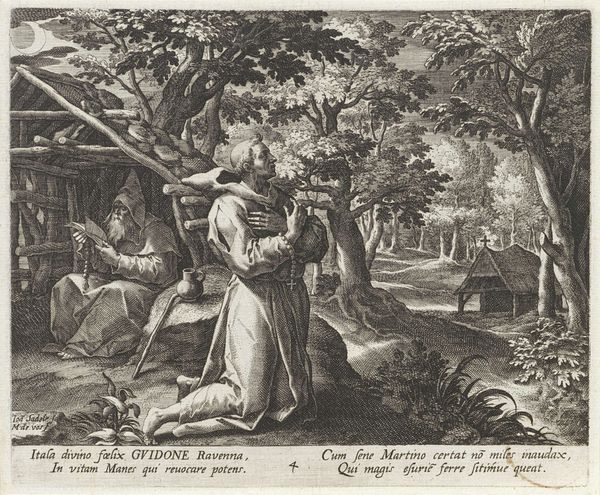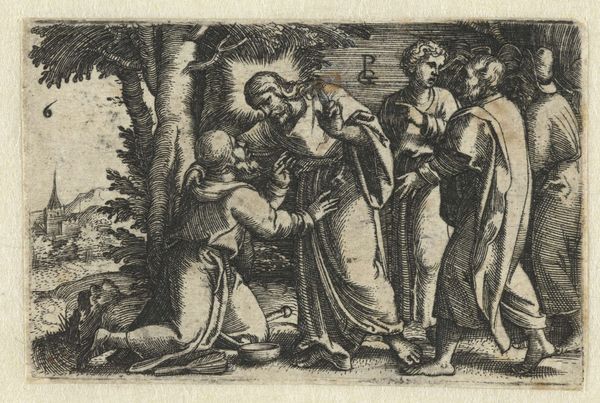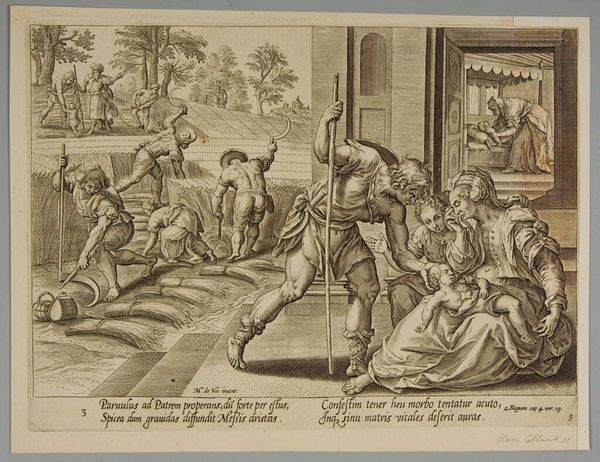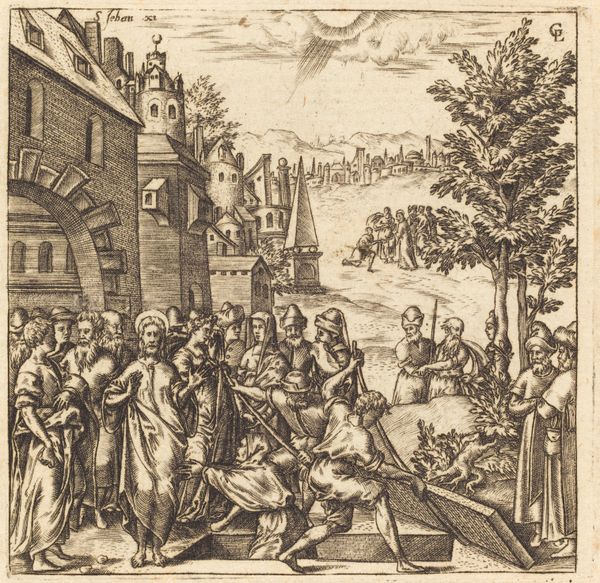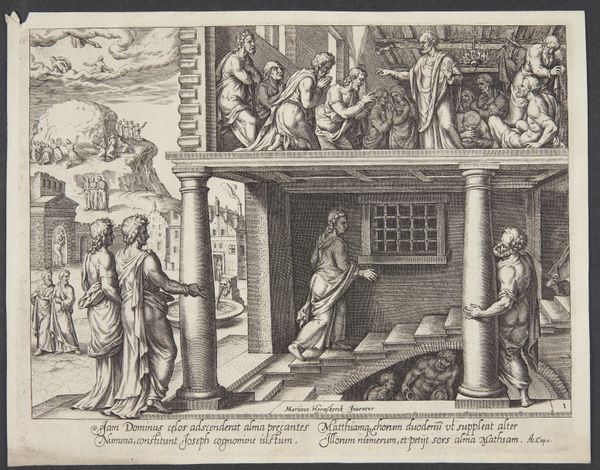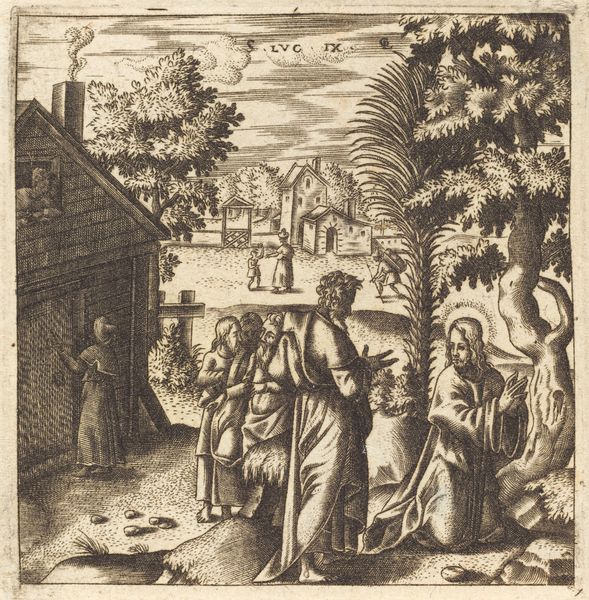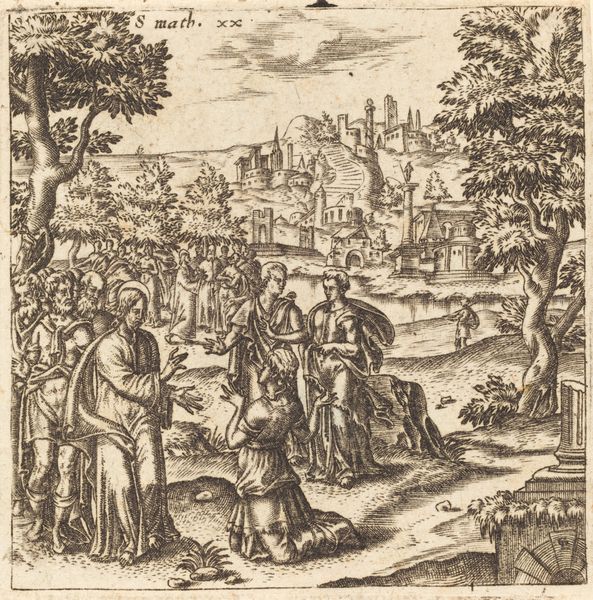
#
pen drawing
#
mechanical pen drawing
#
pen illustration
#
pen sketch
#
junji ito style
#
ink line art
#
linework heavy
#
pen-ink sketch
#
pen work
#
doodle art
Dimensions: width 223 mm, height 75 mm
Copyright: Rijks Museum: Open Domain
This engraving by Julius Goltzius, made around 1595, depicts the Prodigal Son squandering his inheritance. Note the peacock, a symbol of pride and vanity that flaunts its plumage. It’s a motif as old as time—think of Juno's chariot in ancient Roman art, pulled by peacocks, a display of divine grandeur. But here, its meaning shifts. The peacock is not just a symbol of pride but also folly, leading to ruin. We see this symbolic inversion across time. Remember how the snake, once revered for wisdom, became an emblem of temptation and deceit in Christian art? Just as the peacock, with its association with extravagance, foreshadows the son's downfall. It engages our collective memory on a deeper, subconscious level, stirring feelings of unease, and acting as a potent reminder of life's transience. And so, symbols like the peacock aren't static; they are constantly re-evaluated, reappearing in different guises throughout art history, their meanings deepening with each new interpretation.
Comments
No comments
Be the first to comment and join the conversation on the ultimate creative platform.
